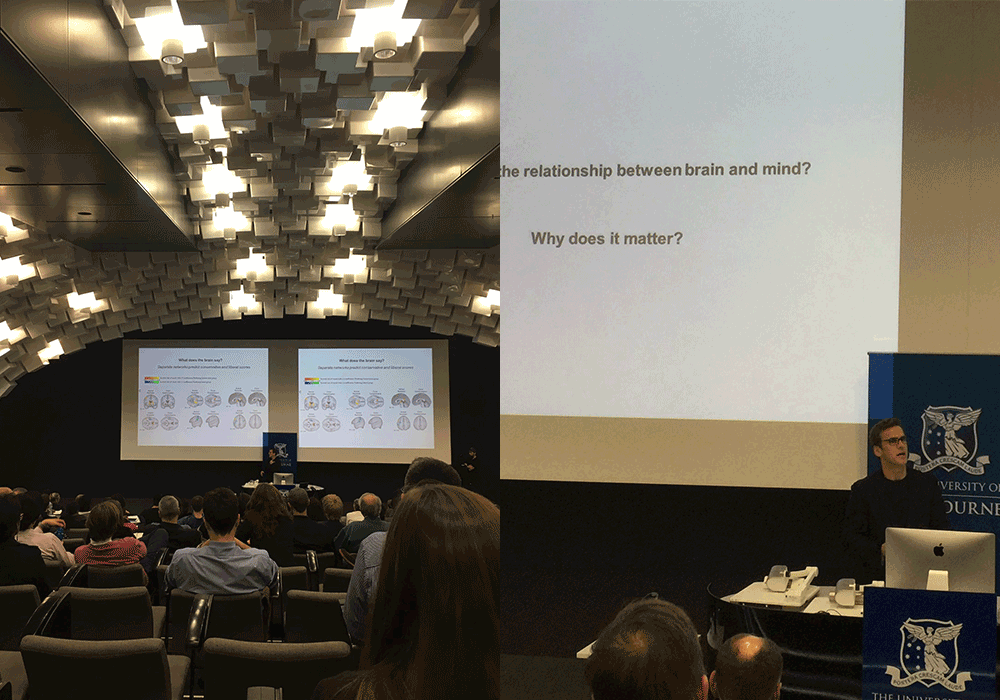Minds on Markets: A Public Lecture with Professor Read Montague
By Carsten Murawski
One of the greatest mysteries of our time is the relation between mind and brain – the relation between the mental world and the physical world.
About 20 years ago, new technologies emerged that allow precise measurement of brain activation patterns. These technologies make it possible to probe the computations that take place in the brain while a person is performing various mental activities, like making an investment decision, voting or reading a novel.
Unraveling the computations of the brain helps to explain how the mind works. The insights that these technologies have triggered a revolution in our understanding of human cognition and decision-making.
In a recent public lecture, Professor Read Montague, one of the world’s leading neuroscientists and pioneer in the study of the neuroscience of decision-making, explained how he and his team combine neuroscience with economics and computer science to discover what happens in the brain while a person is making a decision. This work, exploring the very foundations of cognition, has shed light on financial market crashes, voting behaviour, social interaction as well as several mental disorders.

Montague provided two concrete examples. The first concerned the formation and subsequent burst of financial market bubbles. Montague and his team scanned the brains of several dozen people while these people were trading in an artificial financial market.
They found that some people were systematically better at exploiting financial market bubbles. Those people traded in the early stages of a bubble, while prices were going up, but then got out of the market in time before the bubble peaked. Montague showed that those people were equipped with a warning signal in the brain, signalling the upcoming burst of the bubble.
Such studies help us better understand investor behaviour, in particular, the distinction between ‘skill’ and ‘luck’. An open question is whether people can be trained in the early detection of market bubbles and crashes.
Montague’s second example explored the foundations of political preferences. Using state-of-the-art brain imaging technology, his team investigated the relation of emotions to political preferences. They induced several emotions in people while they were undergoing brain scanning. The team found that brain activation patters during a few seconds of exposure to scary and disgusting images predict a person’s position on the political spectrum.

This work suggests that political preferences, and thus voting behaviour, is deeply rooted in a person’s emotional response to events in the environment.
In the past, many social sciences focused their investigations on behaviour while treating the brain like a black box. Montague and colleagues depart from this approach by making the brain central to their study of cognition. This biology-based approach is reforming our view of human behaviour but has also been a driving force behind recent advances in artificial intelligence.
The Faculty of Business and Economics holds a series of Free Public Lectures throughout the year. Join our mailing list to receive advance notification of upcoming lectures.
Subscribe
Dr Carsten Murawski is an economist in the Department of Finance and co-head of the Decision Neuroscience Laboratory at The University of Melbourne. He uses laboratory experiments to study individual decision-making, in particular its neurobiological basis. Most of his work focuses on intertemporal choice, learning about uncertainty, and problem-solving (optimisation).